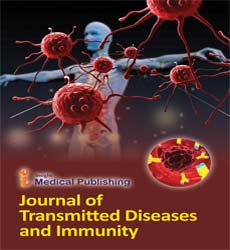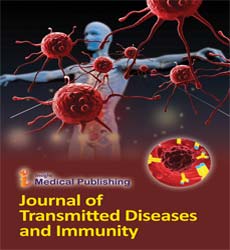ISSN : 2573-0320
Journal of Transmitted Diseases and Immunity
Bacterial Pathogenicity and Molecular Mechanisms of Pathogenicity
Rana G Zaini*
Assistant Professor, Head of Clinical Laboratories Department, College of Applied Medical Sciences, Taif University, Saudi Arabia
- *Corresponding Author:
- Rana G Zaini
Assistant Professor, Head of Clinical Laboratories Department, College of Applied Medical Sciences, Taif University, Saudi Arabia
E-mail: zainirana12@yahoo.com
Received Date: July 23, 2021; Accepted Date: July 30, 2021; Published Date: August 06, 2021
Citation: Zaini RG (2021) Bacterial Pathogenicity and Molecular Mechanisms of Pathogenicity. J Transm Dis Immun. Vol.5 No.4:41.
Editorial
Pathogenic bacteria utilise variety of mechanisms to cause disease in human hosts. Bacterial pathogens express a good range of molecules that bind host cell targets to facilitate a spread of various host responses. The molecular strategies employed by bacteria to interact with the host are often unique to specific pathogens or conserved across several different species. A key to fighting bacterial disease is that the identification and characterisation of these different strategies. The supply of complete genome sequences for several bacterial pathogens including bioinformatics will cause significant advances toward this goal.
Pathogenicity
A pathogen or pathogenic microorganism is typically defined as a biohazard which will cause damage to its host during, or as a consequence of, the host–microorganism interaction. Damage could also be inflicted directly by the microorganism (e.g. by toxins or other so-called virulence factors) or indirectly through the activity of the host immune responses. The power of the pathogen to infect is named its pathogenicity. Microorganisms express their pathogenicity through their virulence. The term refers to the relative and quantitative degree of pathogenicity. Furthermore, pathogens are distinguished from non-pathogens that are considered non-toxic by their virulence.
Pathogenic microorganisms that cause disease (or more generally, physiological damage) are traditionally divided into opportunistic, facultative, and obligate pathogens. Obligate pathogens are capable of infecting only within a narrow host range, but can infect healthy, immune competent individuals of susceptible host species. Tubercle bacillus may be a key example of an obligate pathogen to humans. It causes tuberculosis (TBC) and is one among the main infectious threats that has rising multidrug resistance. It requires living hosts for replication and survival within the same way as obligate symbionts do. Facultative pathogens similarly infect within a narrow host range, but also are capable of surviving outside the host within the (inanimate) environment. Opportunistic pathogens thrive on a good range of organic substrates, and usually exhibit low virulence towards a broad array of living hosts. However, if potential host species become injured or become compromised in their immune responses, opportunistic pathogens could also be ready to attack aggressively, or during a manner that's indolent but progressive. It’s been speculated that obligate and facultative pathogens have evolved from microbial lineages that originally caused only opportunistic infections. Consistent with the damage-response concept, the division into opportunistic, facultative and obligate pathogens can also be accommodated on the idea of host damage predominantly being induced by the microorganism, by the host's innate and purchased immune responses, or by a mixture of those processes established during the interaction, respectively. The evolution of pathogenicity can't be considered independently from the host, so, whenever evolving pathogenicity is discussed throughout this review, evolution of host susceptibility is implied also. The interaction between hosts and pathogens may depend upon adequate ‘key-and-lock’ situations. So as to render a number vulnerable to colonization and/or infection, the genetic make-up of both parties must facilitate molecular interactions that form a solid basis for a mutually agreeable or detrimental interaction. Genetic variation, selection of the best-fitting mutants, and retention (or progression into disease) is the elemental processes for tweaking the interactions.

Open Access Journals
- Aquaculture & Veterinary Science
- Chemistry & Chemical Sciences
- Clinical Sciences
- Engineering
- General Science
- Genetics & Molecular Biology
- Health Care & Nursing
- Immunology & Microbiology
- Materials Science
- Mathematics & Physics
- Medical Sciences
- Neurology & Psychiatry
- Oncology & Cancer Science
- Pharmaceutical Sciences
